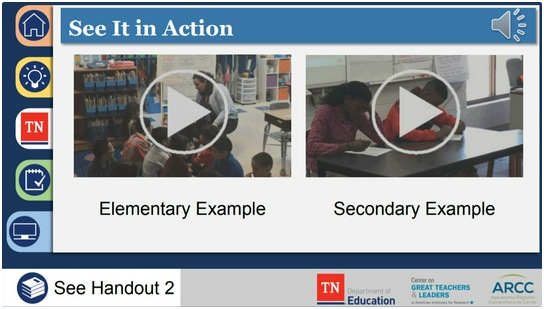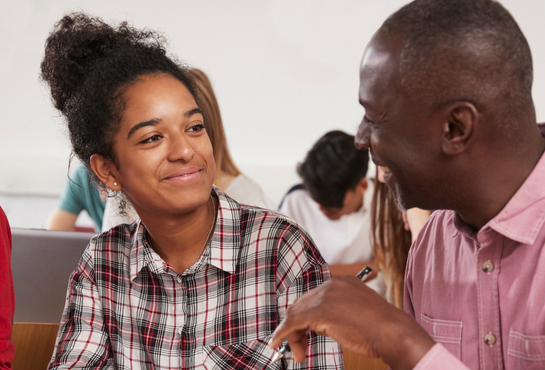Integrating Social and Emotional Learning in Tennessee
Integrating Social and Emotional Learning By Supporting Instructional Practices
Featured Tool
The SEL School : Connecting Social and Emotional Learning to Effective Teaching
Great teachers do more than promote the student's academic learning–they teach the whole child. Our Social and Emotional Learning (SEL) School helps teachers, school and district leaders, and state education agencies collaborate in connecting social and emotional learning to effective teaching practices.
Client
Tennessee Department of Education (TDOE)
Project
Help TDOE support teachers in integrating GTL's ten teaching practices for supporting SEL instruction in their classrooms.
Outcome
- Toolkit connecting TN evaluation model and the ten instructional practices
- Online modules for each instructional practice
- Developmental indicators for social and personal competencies
Team
Pat Conner, TDOE Lead
Nick Yoder, GTL Project Lead
The Challenge
In 2015, the Tennessee Department of Education ‘s (TDOE) Safe and Supportive Schools division reached out to the GTL Center to support Tennessee’s Social and Personal Competencies (Tennessee's term for social and emotional learning competencies) efforts as part of their sustainability plan of their Safe, Supportive Schools (S3) grant. Through their S3 grant, TDOE measured school climate in districts throughout the state, demonstrating the need for resources to support student social and personal development.
The Opportunity
After consulting across offices at TDOE, the state decided to adopt GTL Center’s 10 teaching practices that promote social and personal development. They adopted these practices because they:
- help teachers integrate social, personal, and academic development;
- align with the practices in the Tennessee Educator Acceleration Model (TEAM), the state’s educator evaluation model; and
- can be leveraged to develop professional learning experiences for educators.
The GTL Center worked with TDOE from 2015 to 2019 to build the state's capacity to support educators in implementing social and emotional learning strategies and practices in their classrooms.
The Approach and Outcomes
To help Tennessee educators more clearly see the connection between the states' TEAM evaluation model and the social and personal competencies in their day-to-day work in the classroom, GTL Center staff, in partnership with Appalachia Regional Comprehensive Center (ARCC), provided collaborative support to co-author two sets of resources:
TEAM Toolkit
This Toolkit:
- Describes the 10 instructional practices in detail for educators;
- Demonstrates the direct alignment between the 10 instructional practices and specific indicators within the TEAM evaluation rubric; and
- Offers example videos, look-fors in classroom observation, and administrator–teacher discussion prompts.
Online Modules for Each Practices
The Online Modules:
The modules provide concrete examples and next steps for educators to support whole child development in their classrooms.
Each module:
- introduces one teaching practice and why it is important;
- provides self-reflection activities and classroom videos for teachers implementing each practice;
- explicit examples of how to implement each practice in the classroom that supports student social and personal development; and
- an action planning template.
Client Perspective
Pat Conner, director of State Supportive Schools, has seen firsthand the positive response from educators that this multi-year effort has produced:
"We've seen a groundswell of support from educators around the social and personal competencies and the instructional practices. We reinforce the importance of including those [practices] to strengthen instruction. There has to be a blend in the classroom and there are some effective ways to deliver instruction that also build the competencies in students. This is something teachers have asked for. They know it's important."
TDOE continues to integrate the work into other state initiatives. According to Pat Conner, director of the State Supportive School Office at TDOE, "The other piece that we are certainly tying to our social and personal competencies work is a training that we developed over the summer on adverse childhood experiences and trauma-informed care. These instructional practices really fall in line with what a trauma-informed classroom and the instruction in that classroom should look like."








